Natural fabrics have been at the heart of human clothing and household textiles for thousands of years. Among these natural wonders, linen and cotton stand out as two of the most popular and versatile options. While they might seem similar at first glance, these fabrics have distinct characteristics, origins, and uses that make each unique and suitable for different purposes.
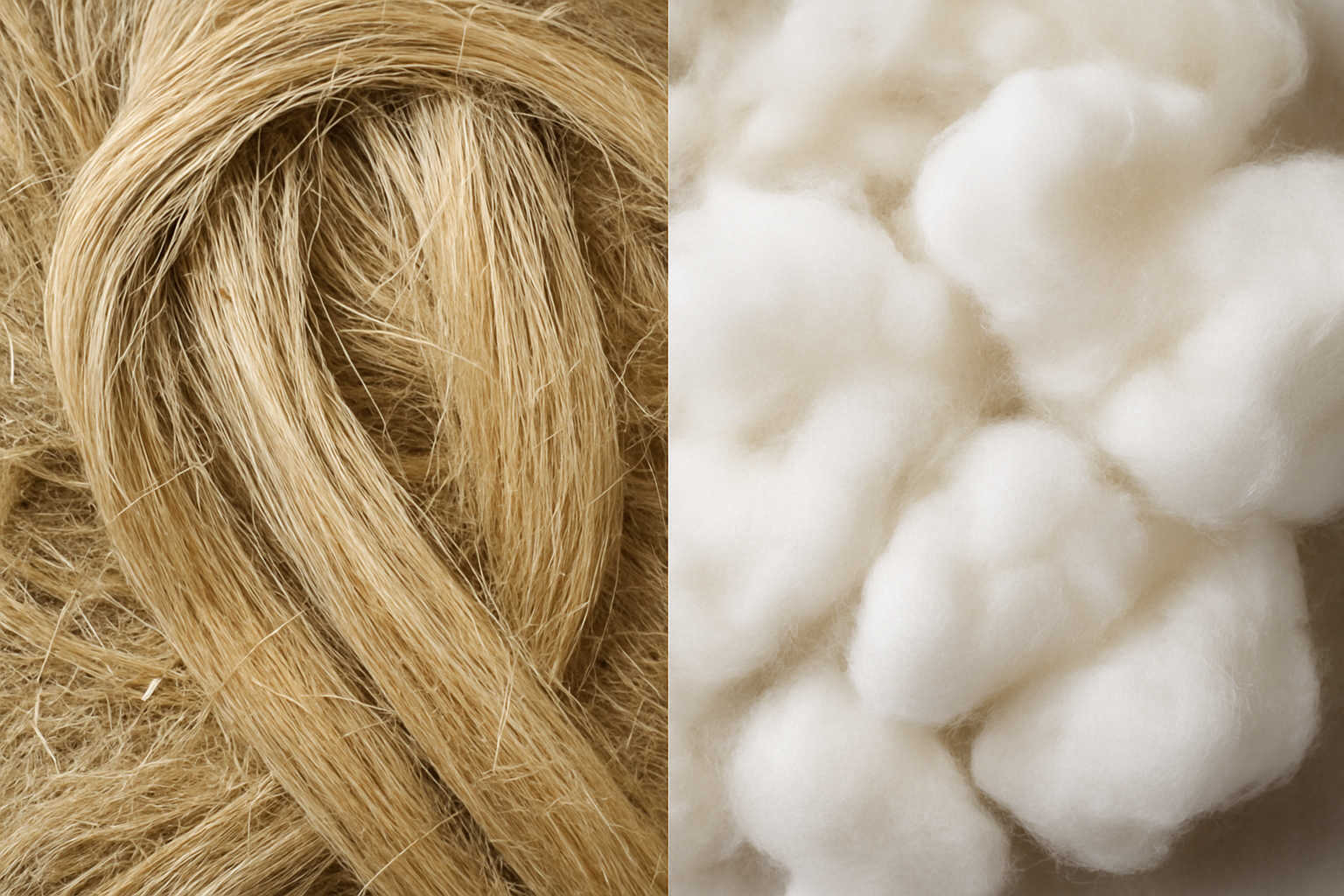
Origins and Production
Linen: The Ancient Luxury
Linen is one of the oldest known textiles, with evidence of its use dating back to 8000 BCE in ancient Mesopotamia. It is derived from the flax plant (Linum usitatissimum), which requires specific growing conditions and careful harvesting. The process of creating linen fabric is labor-intensive, involving retting (soaking the stalks to separate fibers), breaking, scutching, and spinning before weaving.

Cotton: The Common Comfort
Cotton comes from the seed pods of cotton plants (genus Gossypium). While evidence suggests cotton cultivation began around 5000 BCE in Mexico and the Indus Valley, it gained widespread popularity during the Industrial Revolution. Cotton processing involves harvesting, ginning (removing seeds), cleaning, carding, and spinning before being woven into fabric.
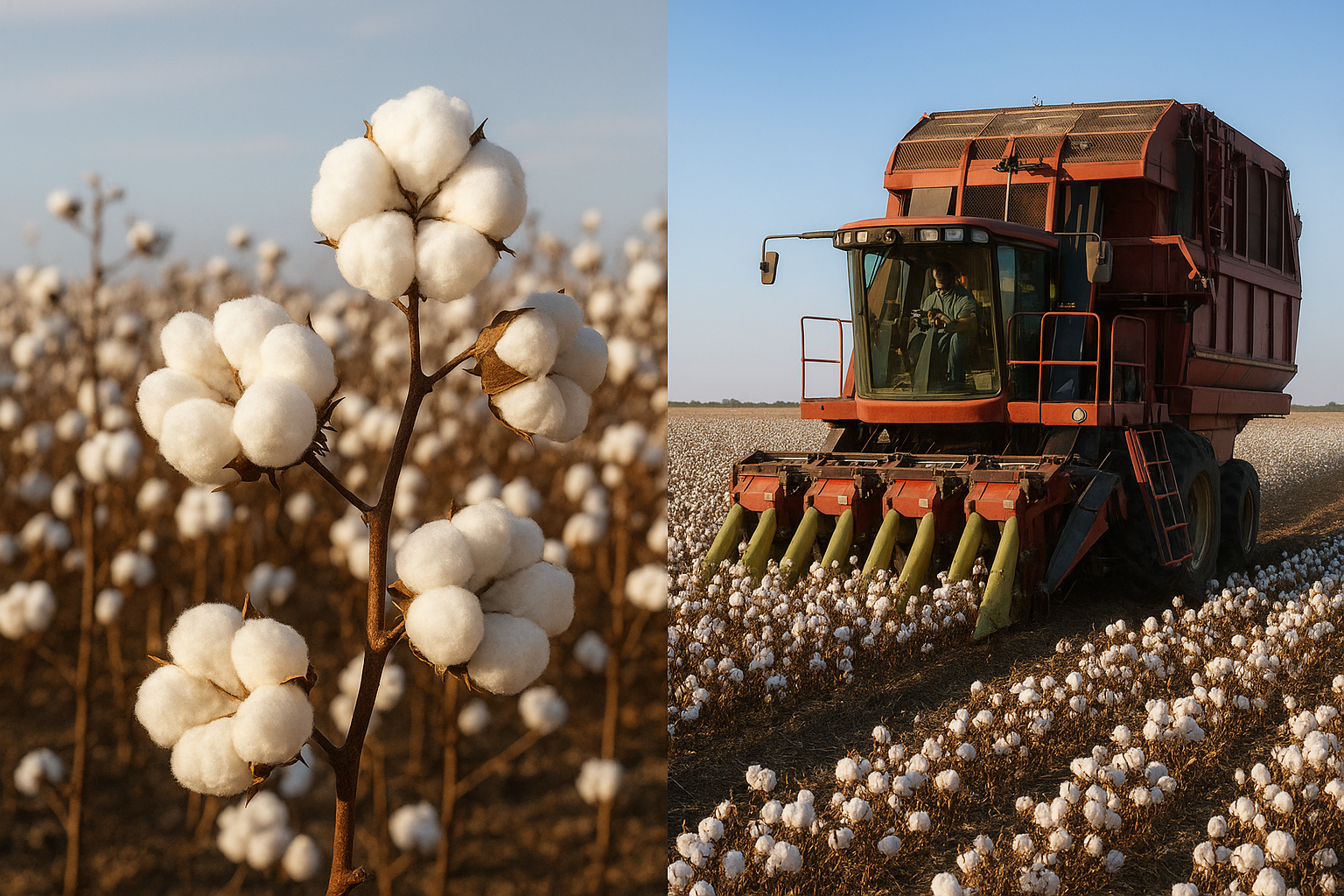
Physical Characteristics
| Property | Linen | Cotton |
|---|---|---|
| Fiber Strength | Extremely strong; 30% stronger than cotton | Strong but less durable than linen |
| Texture | Initially crisp; softens with use | Naturally soft from the beginning |
| Absorbency | Highly absorbent (can absorb up to 20% of its weight) | Very absorbent (can absorb up to 25% of its weight) |
| Heat Conductivity | Excellent; feels cool to the touch | Good but retains more heat than linen |
| Wrinkle Resistance | Wrinkles easily | Wrinkles, but less than linen |
| Drying Time | Dries quickly | Takes longer to dry |
| Softness | Gets softer with each wash | Soft from first use |
| Environmental Impact | Low water usage, minimal pesticides | High water usage, often requires pesticides |
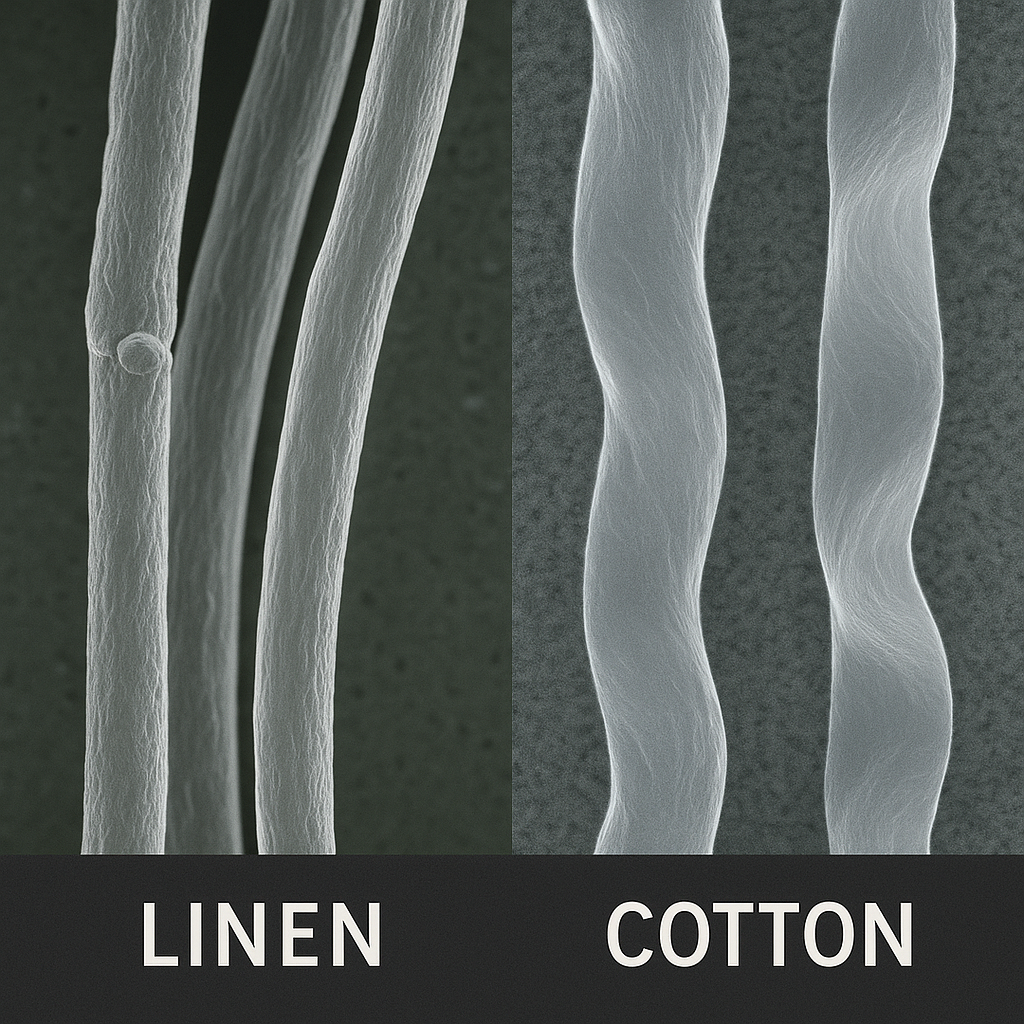
Common Uses
Linen Applications
- High-quality bedding and table linens
- Summer clothing (suits, dresses, shirts)
- Bath towels and spa products
- Home décor (curtains, upholstery)
- Canvas for oil paintings
- Specialty paper products
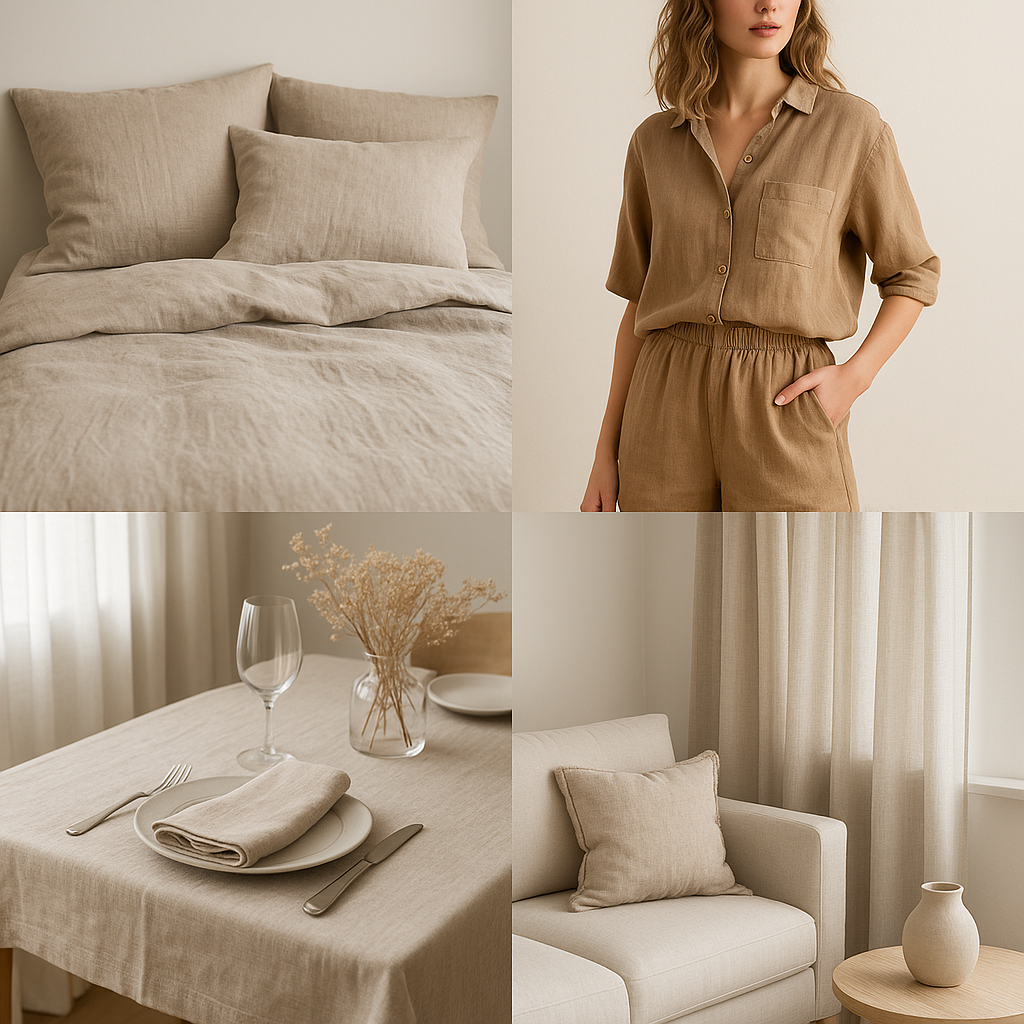
Cotton Applications
- Everyday clothing (t-shirts, jeans, undergarments)
- Bedding and towels
- Medical supplies (bandages, swabs)
- Household items (dish towels, rugs)
- Industrial products (tarpaulins, book bindings)
- Personal hygiene products
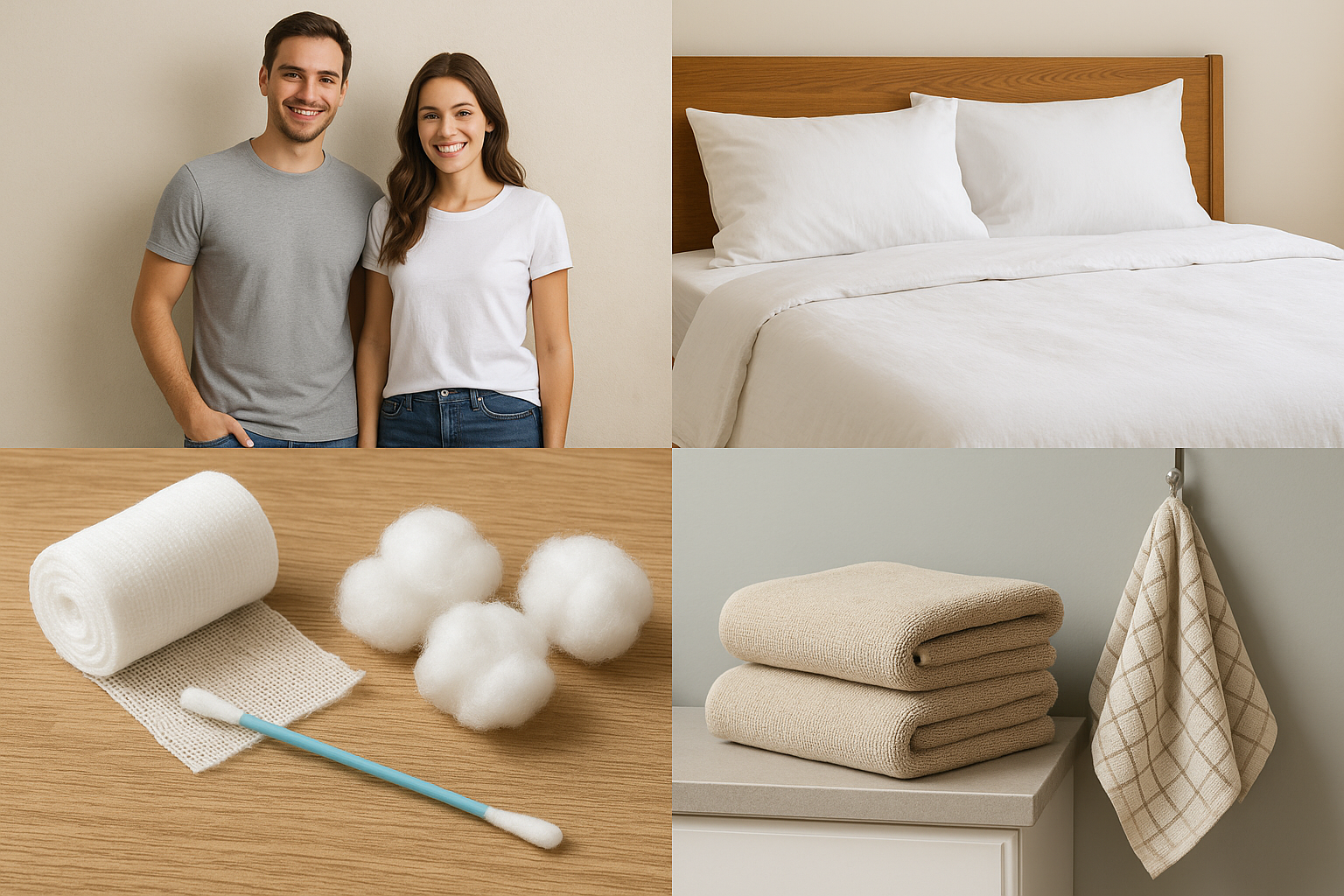
Sustainability Comparison
The environmental impact of these fabrics varies significantly across their lifecycles:
Linen Sustainability
Flax plants require minimal water, pesticides, or fertilizers to grow. The entire flax plant can be used, creating virtually no waste. Linen production does require more energy during manufacturing, but the resulting fabric is biodegradable and extremely durable, meaning linen products last longer than many alternatives.
Cotton Sustainability
Conventional cotton farming is water-intensive and often relies heavily on pesticides, making it one of the more environmentally demanding crops. However, organic cotton and better farming practices are improving this footprint. Cotton's processing is less energy-intensive than linen, and the fabric is also biodegradable.
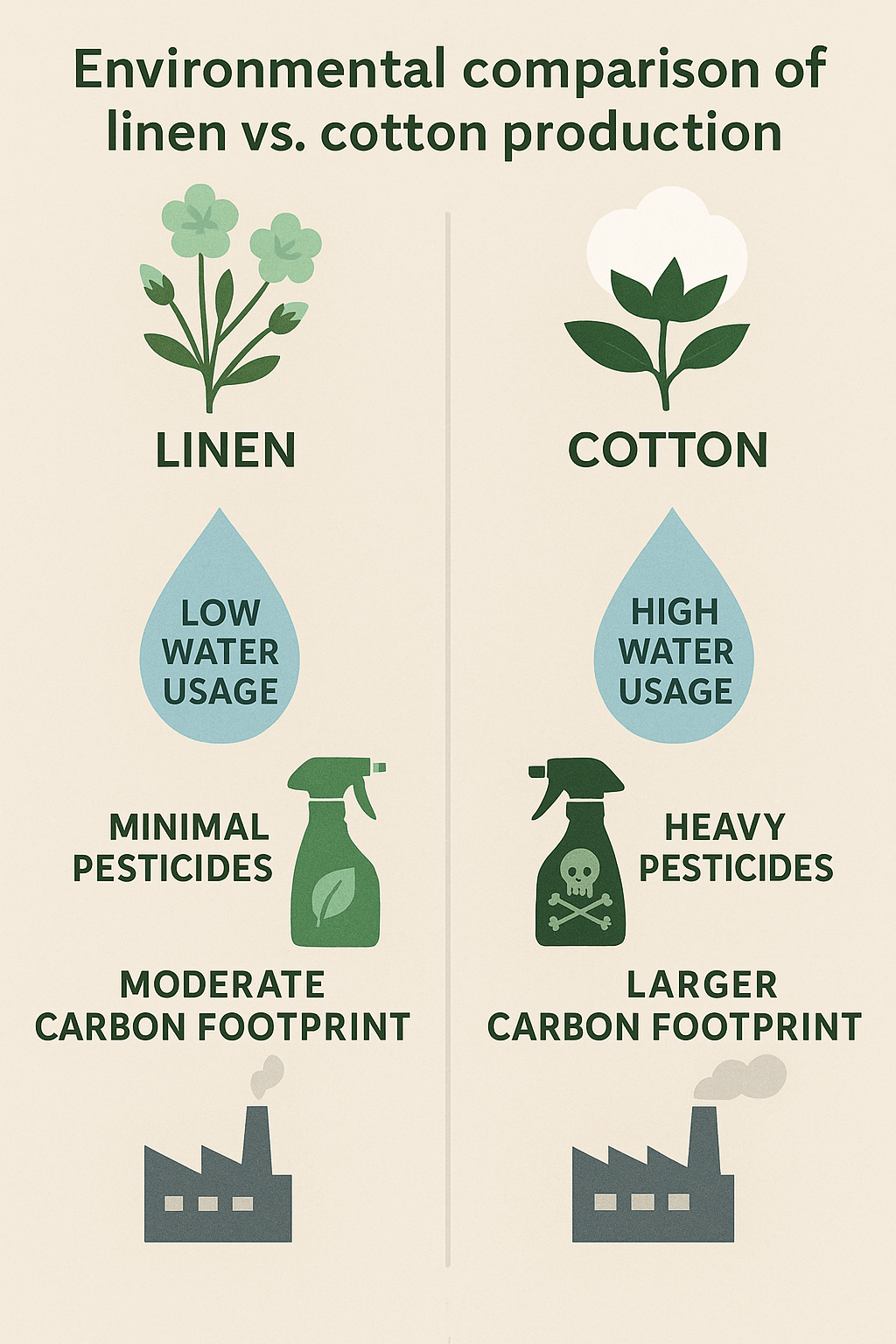
Care and Maintenance
Caring for Linen
Linen benefits from gentle washing in lukewarm water with mild detergent. While it can be machine washed, a gentle cycle is recommended. Linen can be tumble dried on low heat but is best air-dried to preserve its natural texture. It's normal for linen to wrinkle, which many consider part of its aesthetic charm. For a smoother look, iron while slightly damp on medium-high heat.
Caring for Cotton
Cotton is generally easier to care for than linen. It can be machine washed in warm or cold water and tumble dried. Cotton fabrics may shrink slightly during the first wash, so pre-shrunk options are popular. Cotton wrinkles less than linen but may still require ironing for a crisp appearance. It can withstand higher washing temperatures, making it more suitable for items requiring sanitization.
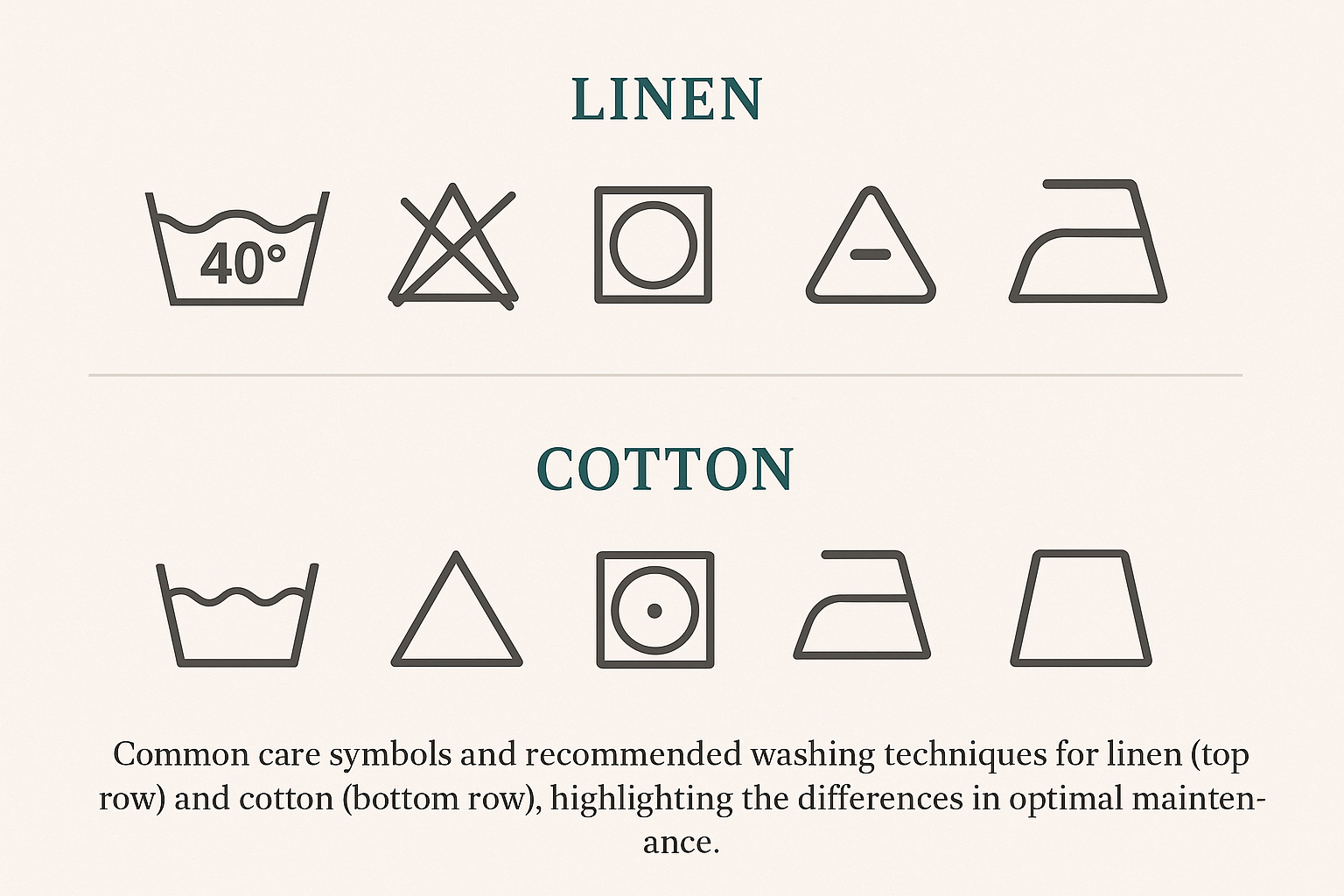
Which Is Better? It Depends
The choice between linen and cotton ultimately depends on specific needs and preferences:
- Choose linen if: You prioritize durability, cooling properties, and sustainability, and don't mind some wrinkling and a higher initial cost.
- Choose cotton if: You value softness, easy care, versatility, and affordability, and prefer a smoother appearance.
Many conscious consumers now include both fabrics in their homes and wardrobes, selecting the appropriate material based on the specific item, season, and intended use. Understanding the unique qualities of each fabric enables more